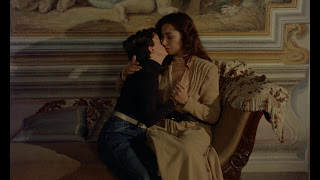I had the good fortune to meet John on two occasions - that's what I called him, before learning that he preferred to be called Zach. When we met the second time, it was at WonderFest in 2007. He was 87, walked with a cane for short distances, and was sometimes wheeled about by his devoted biographer Richard Scrivani (GOOD NIGHT, WHATEVER YOU ARE: MY JOURNEY WITH ZACHERLEY, THE COOL GHOUL is essential reading to any and all devotees of 1960s pop sociology). He had a courtly way of speaking that belonged to another time. Women, whose hands he sometimes kissed, were "my dear" and men were sometimes called "old boy." Despite these signposts of age, which included hands and fingers badly gnarled by arthritis, you could look at him and swear he was 40. He was Halloween incarnate but he was really from the same school of so-called "sick comedy" as Lenny Bruce, Spike Jones, and Vampira; he just did his stand-up act in the mad laboratory of live television. It's a tragedy that so little of that pioneering work from his prime survives.
For New York area Baby Boomers, he was the guy who actually introduced them to the classic Universal monsters they had only read about in Forrest J Ackerman's FAMOUS MONSTERS OF FILMLAND - on Channel 7's SHOCK THEATRE from 1958 to 1959 (as "Roland" - emphasis on the second syllable, if you please), then on New Jersey's Channel 9 with ZACHERLEY AT 12 from October 1959 for another year or more. He recorded novelty albums that hold up wonderfully well (SPOOK ALONG WITH ZACHERLEY, MONSTER MASH, SCARY TALES, and the much later INTERMENT FOR TWO) and he was a radio personality as well, which led him to host (circa 1966-67) a great sock hop show called Disc-O-Teen, of which only the last two episodes survive. Though already well into his fifties, he was sometimes called upon to introduce bands like Jefferson Airplane and the Grateful Dead when they played the Big Apple. His introduction of "the Grateful goddamn Dead" has been preserved for posterity on their album DICK'S PICKS VOLUME 4 (February 12, 1970 at the Fillmore East), which coincidentally turned out to be one of the Dead's most intense, improvisationally alive performances.
I'm an Ohioan and never got to see Zacherley on live TV until he made a guest appearance on Tom Snyder's TOMORROW program sometime in the 1970s. I had known his face from childhood, thanks to FAMOUS MONSTERS showcasing him on a couple of their early covers, but I was pleasantly surprised not only by his droll, chortling, self-mocking manner but also the extremity of his gags (he proceeded to "mate" two blobs of gelatin encased in cheesecloth, which he called "amoebas") and the range of his cultural references. When Snyder asked Zach what frightened him, he quoted John Cale's PARIS 1919 song "Hanky Panky Nohow": "Nothing frightens me more / Than religion at my door." When I first met him at a Chiller Theater convention in October 1994, we literally bumped into each other in a hall - I was stuck working a table for Barbara Steele and didn't even know he was there! - and we started talking like we'd known each other for years. Indeed, a book he inscribed for me was signed to "old friend Tim." (Did he know something I didn't?)
 |
| A privileged and proud moment. |
He was a very special man, the very embodiment of all that's best in this genre and the wonderful weirdies it attracts. I thought the world of him.
Rest in peace, old friend.
(c) 2016 by Tim Lucas. All frights reserved by the author.























































